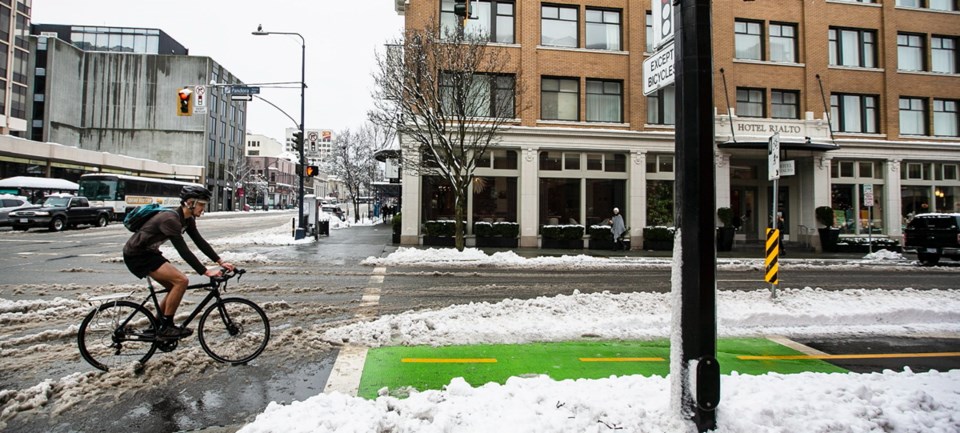Victoria councillors gave the green light Thursday to fast-tracking the city’s cycling network with the goal of completing all 32 kilometres within three years.
The accelerated pace will cost an additional $350,000 a year and see a “streamlining” of community consultation. The additional costs are to be paid through gas tax funds and development cost charges.
Mayor Lisa Helps said the community consultation will be “meaningful,” even though it will be expedited.
The Intergovernmental Panel on Climate Change has stated that there is no time to waste in reducing greenhouse gases, and that means no time to waste in completing the bike network, she said.
“I really feel that everywhere around the world, including first-world privileged cities like ourselves, really need to do our part and for me that’s the impetus for moving this along and getting it done by 2022,” Helps said.
The single biggest reduction that Victoria can make to carbon pollution is to get more people walking, cycling and riding transit, she said.
Coun. Jeremy Loveday said the climate emergency means the city has to take emergency action.
“My vision remains Victoria as a city where you can travel safely and conveniently from one neighbourhood to the next — from one side of the city to the other no matter what mode of transportation you use,” Loveday said.
“I think right now you can’t do that as a cyclist … and that when this project is completed, that will have changed.”
Coun. Geoff Young, a cyclist who said he looks forward to the network being completed, did not support the streamlined plan.
“Although I’m excited by the future prospects for the network, I have some difficulty with the proposal to speed things up,” Young said.
“I think there will be costs that won’t be recoverable.”
Young predicted the current hot construction market will cool and that construction costs are likely to decline.
Under the accelerated program, more temporary staff for community engagement, design technicians and administrative help will be brought on board to complete the project by the end of 2022.
Staff have proposed reducing the overall number of engagement events and tailoring engagement based on the complexity of each bike-lane corridor, shortening the process to three months from the current range of six to eight months.
Without making the changes or the hirings, it would likely take until 2023 or 2024 to complete the bike lanes.
Director of engineering Fraser Work said meaningful community consultation is possible through a sped-up process. “What we’re recommending is, yeah, we can do it quicker and not dilute the quality below an acceptable threshold.”
The city opened the first leg of the cycling network — a protected, two-way bike lane on Pandora Avenue between Cook and Wharf streets — in April 2017, at a cost of $3.4 million.
The second leg, on Fort Street between Cook and Wharf, opened last May at a cost of $3.27 million.
Construction is to start soon on a separated bike lane on Wharf Street between Pandora and Humboldt streets. That is estimated to cost about $4.02 million.
There are tentative plans for lanes along Vancouver Street, parallel to Bay Street (Haultain Street/Kings Road between Richmond Road and Dowler Street), and from the area of Doncaster Drive/North Dairy Road to Gonzales Beach.



